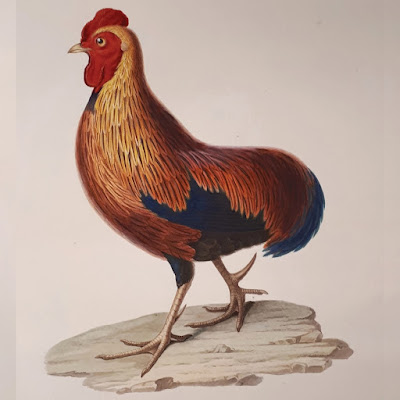 |
| Wang, Liu, Liu, Chang, Wang & Zhang, 2017 DOI: 10.1016/j.ympev.2017.05.003 |
Highlights
• The phylogenetic relationship of Eared Pheasants was resolved based on 45 loci.
• Asymmetric historical gene flow occurred between both parapatric and allopatric sister species.
• Allopatric sister species exhibit significantly divergent ecological niches whereas parapatric sister species show niche conservatism.
• Ecological divergence may have been the main factor that promoted ecological niche divergence.
One of the most contentious theories in current ecology is the ecological niche conservatism, which is defined as conservatism among closely related species; however, the ecological niche can also be shifted, as documented in several cases. Genetic drift and ecological divergent selection may cause ecological niche divergence. The current study aims to test whether the ecological niche is conserved or divergent and to determine the main factor that drives ecological niche divergence or conservation. We analyzed the phylogenetic relationship, ecological niche model (ENM) and demographic history of Eared Pheasants in the genus Crossoptilon (Galliformes: Phasianidae) to test niche conservatism with respect to different geographically distributed patterns. The phylogenetic relationship was reconstructed using ∗BEAST with mitochondrial cytochrome b (cyt b) and 44 unlinked autosomal exonic loci, and ENMs were reconstructed in MAXENT using an average of 41 occurrence sites in each species and 22 bioclimatic variables. A background similarity test was used to detect whether the ecological niche is conserved. Demographic history was estimated using the isolation with migration (IM) model. We found that there was asymmetric gene flow between the allopatric sister species Crossoptilon mantchuricum and C. auritum and the parapatric sister species C. harmani and C. crossoptilon. We found that ecological niches were divergent, not conserved, between C. mantchuricum and C. auritum, which began to diverge at approximately 0.3 million years ago. However, the ecological niches were conserved between C. crossoptilon and C. harmani, which gradually diverged approximately half a million years ago. Ecological niches can be either conserved or divergent, and ecological divergent selection for local adaptation is probably an important factor that promotes and maintains niche divergence in the face of gene flow. This study provides a better understanding of the role that divergent selection has in the initial speciation process. The platform combined demographic processes and ecological niches to offer new insights into the mechanism of biogeography patterns.
Keywords: Crossoptilon; Eared-pheasant; Divergent selection; Ecological niche modeling; Genetic drift; Gene flow
 |
| Fig. 1. Map of the study area indicating the occurrence points used in for the background similarity test of Ecological Niche Models (ENMs) and the location of DNA samples used in demographic analyses. (The occurrence points (circles) were from bird-watching records (http://birdtalker.net), the Global Biodiversity Information Facility (http://www.gbif.org) and our unpublished survey data. Occurrence points that were far from each other (at least 10 km) and were randomly chosen in ArcGIS software were used for the background similarity test. The study area was the minimal convex polygon of those occurrence points with an additional 200 km. Triangles represent the locations of DNA samples. The area surrounded by the black dashed line was the study area used for the background similarity test. |
Pengcheng Wang, Yang Liu, Yinong Liu, Yajing Chang, Nan Wang and Zhengwang Zhang. 2017. The Role of Niche Divergence and Geographic Arrangement in the Speciation of Eared Pheasants (Crossoptilon, Hodgson 1938). Molecular Phylogenetics and Evolution. In Press. DOI: 10.1016/j.ympev.2017.05.003
---------------------------------------------------------------
روابط التحميل والمشاهدة، الروابط المباشرة للتحميل
او
شاهد هذا الفيديو القصير لطريقة التحميل البسيطة
كيف تحصل على مدونة جاهزة بآلاف المواضيع والمشاركات من هنا
شاهد قناة منتدى مدونات بلوجر جاهزة بألاف المواضيع والمشاركات على اليوتيوب لمزيد من الشرح من هنا
رابط مدونة منتدى مدونات بلوجر جاهزة بآلاف المواضيع والمشاركات في أي وقت حــــتى لو تم حذفها من هنا
شاهد صفحة منتدى مدونات بلوجر جاهزة بألاف المواضيع والمشاركات على الفيس بوك لمزيد من الشرح من هنا
شاهد صفحة منتدى مدونات بلوجر جاهزة بألاف المواضيع والمشاركات على الفيس بوك لمزيد من الشرح من هنا
تعرف على ترتيب مواضيع منتدى مدونات بلوجر جاهزة بآلاف المواضيع والمشاركات (حتى لا تختلط عليك الامور) من هنا
ملاحظة هامة: كل عمليات تنزيل، رفع، وتعديل المواضيع الجاهزة تتم بطريقة آلية، ونعتذر عن اي موضوع مخالف او مخل بالحياء مرفوع بالمدونات الجاهزة بآلاف المواضيع والمشاركات، ولكم ان تقوموا بحذف هذه المواضيع والمشاركات والطريقة بسيطة وسهلة. ــــــــــــــــــــــــــــــــــــــــــــــــــــــــــــــــــــــــــــــسلامـ.














